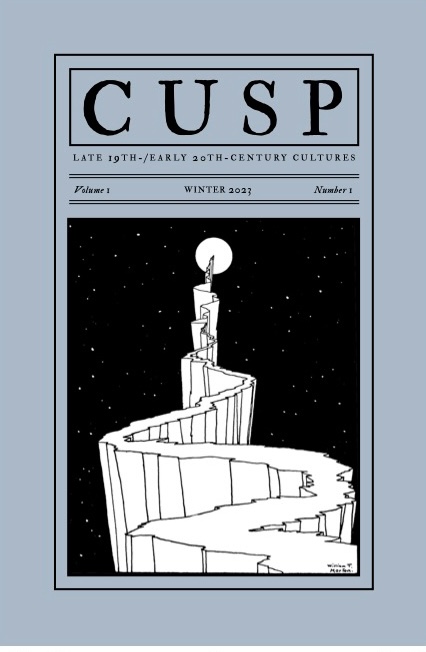Kristin Mahoney, Associate Professor in the Department of English at Michigan State University, has helped create a new journal that focuses on field-defining scholarship on the works, authors, artists, problems, and phenomena that defined the dynamic period from the late 19th century to the early 20th century.
The journal, titled Cusp: Late 19th-/Early 20th-Century Cultures, aims to promote interdisciplinarity scholarship on the visual arts, cinema and theatre, literature, periodical studies, and music.
Mahoney, whose research focuses on late-Victorian Decadence and its afterlives in the 20th century, says she has always felt her work doesn’t fit properly within Victorian studies or modernist studies “and I know I’m not the only one who feels that way.”

“My work operates across that boundary of periodization,” Mahoney said. “Everybody who is writing during the Victorian period doesn’t very neatly pass away in 1901. A lot of these people continue to work and influence some of the newer younger writers who are starting to publish in the 1910s and 1920s.”
The idea behind Cusp came right before the COVID-19 pandemic when a similar journal, English Literature in Transition 1880-1920, shut down. This concerned Mahoney and her Cusp co-editors, Kate Hext and Alex Murray, as it had been an important space for scholars to publish their work that doesn’t properly fit into Victorian studies or modernist studies.
“We wanted to create a space where people whose work operated across boundaries of periodization could have a place that welcomed their scholarship.”
“When English Literature in Transition closed, I felt really concerned, especially for early career scholars who might not have a space to place their work with that journal disappearing,” Mahoney said. “We wanted to create a space where people whose work operated across boundaries of periodization could have a place that welcomed their scholarship.”
Mahoney’s goal is that Cusp, whose name speaks to moments of transition, might build upon English Literature in Transition’s inclusivity to scholars working across categories of periodization and expand on it, opening the journal to scholars from multiple disciplines. This new journal also provides a space for exploring global or transnational perspectives.

“We want to include people whose work is undoing this adherence to thinking in terms of being restricted by national boundaries or being restricted to certain disciplinary perspectives and allowing for the ways that the arts and cinema and literature were all in conversation with one another, and music and theater as well,” Mahoney said.
The first issue of Cusp, which was published in September 2022, includes a set of position pieces that help set the tone for where the journal wants to go in the future. The issue includes essays about early film and popular shows, representations of animals, photography, turn-of-the-century Argentina, anti-colonial form, queer kinship, and the treatment of boarders and cosmopolitanism at the turn of the century.
The second issue of Cusp, which will be published in 2023, will focus on Impressionism.
“We’re working really hard with these first issues to make sure we indicate as clearly as possible that this is not just a journal for people working on English literature but something much broader in its approach.”
“We’re working really hard with these first issues to make sure we indicate as clearly as possible that this is not just a journal for people working on English literature but something much broader in its approach,” Mahoney said. “When you’re establishing a journal, during the first couple years, you are setting a foundation for what you’re going to include in the future.”
The editors of Cusp also aim to include as many images as possible in the journal so as to appeal to art historians and cinema studies scholars. The emphasis on the visual also can be seen in the design of the journal, which mimics the aesthetic of the period by modeling its cover after the popular “Little Magazines” of the early 20th century, where many of the modern avant-garde writers were publishing.
Published by Johns Hopkins University Press, Cusp is available both in print and online via Project MUSE and will publish two issues per year, with plans to publish quarterly once it’s better established.


